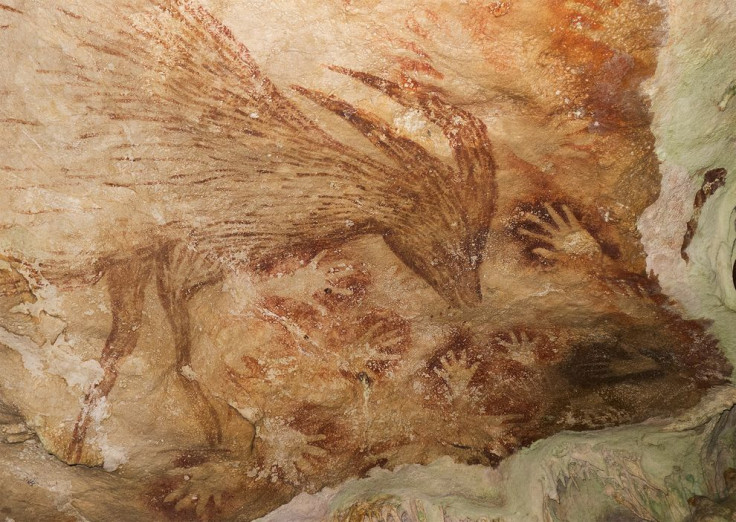Oldest Cave Paintings Found? 40,000-Year-Old Indonesian ‘Stencil’ Art Is Among Earliest Of Its Kind

Ancient graffiti artists may have neglected to sign their works in the dramatic style of their 20th and 21st century New York counterparts, but the walls they decorated are no less impressive. Cave paintings on the Indonesian island of Sulawesi depict stencil-like outlines of human hands and local animals and date back to at least 39,900 years ago, making them among the oldest cave paintings in the world and broadening scientists’ understanding of where early cave artists lived, according to a study published Wednesday in the journal Nature.
Until now, cave art dating back around 40,000 years had only been found in Europe in the caves of France and Spain. The discovery of cave art in Sulawesi from that same period in human history means prehistoric Europe was not the only haven for cave artists. Archaeologists have called the discovery a “really important find” because it “enables us to get away from this Euro-centric view of a creative explosion that was special to Europe,” Chris Stringer of the Natural History Museum in London told the BBC.
The Sulawesi cave paintings were actually discovered some 50 years ago, but the dates and origin of the art were previously unknown. Scientists led by a team from the Griffith University in Australia used a method of uranium-thorium dating to study the age of the calcium carbonate, informally known as “cave popcorn,” that formed over the cave art. This method of dating calculates age from the production rate of calcium carbonate compared to its decay rate. Previous but less-advanced dating techniques had pinpointed the paintings’ age to around 12,000 years. Researchers believe similar cave art from that time exists in other parts of Asia and Australia but has not been accurately dated.
Last year, scientists analyzed ancient handprints at the El Castillo cave in Cantabria, Spain, home to Europe’s oldest cave art, and discovered that Europe’s first artists were women. By measuring the finger ratios of the handprints and comparing them to what we know about the differences in male and female hands, researchers found that, contrary to what archaeologists previously thought, only about 10 percent of the handprints in El Castillo were made by men.
Such handprints were usually made by blowing red-brown pigments through rough tubes onto a cave’s walls. The pigments were also rubbed directly onto the walls to create representations of animals like bison and deer.
© Copyright IBTimes 2024. All rights reserved.






















